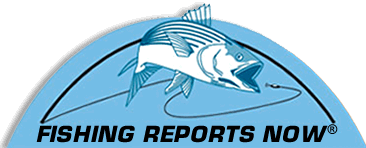ASMFC Approves
Striper Commercial Quota Status Quo
Striper Commercial Quota Status Quo
From an e-mail from t he Atlantic States Marine Fisheries Commission
on 11/17:
ASMFC Striped Bass Board Approves Addendum II
Coastal Commercial Quotas Remain Unchanged;
Juvenile Abundance Index Management Trigger Improved
Charleston, SC - The Commission's Atlantic Striped Bass Management Board approved Addendum II to Amendment 6 to the Interstate Fishery Management Plan for Atlantic Striped Bass. The Addendum revises the definition of juvenile recruitment failure based on a recommendation from the Striped Bass Technical Committee. The Management Board approved status quo management for the coastal commercial quotas, which were being considered for an increase as part of the Addendum.
"After lengthy deliberation, the sense of the Board was that recent fishery trends do not warrant an increase in fishing mortality, commercial or recreational, at this time," said Board Chair, Jack Travelstead. "The Board also accelerated the assessment schedule, requesting an update assessment in 2011 prior to the next benchmark assessment in 2013 to more closely track changes in the fishery and the resource."
The proposal to increase the coastal commercial quota was intended to bring more parity between the commercial and recreational fishery sectors. Although Amendment 6 established management programs for both fisheries based on the same target fishing mortality rate, the coastal commercial fisheries are controlled by quotas whereas the coastal recreational fisheries are managed through possession and size limits. As a result, the recreational harvest has increased with expanding striped bass population levels, and now accounts for approximately 70 percent of total harvest.
The Management Board opted to maintain the existing coastal commercial quotas for several reasons, including a 66 percent decline in estimated recreational catch from 2006 to 2009; a 25 percent decline in estimated striped bass abundance from 2004 to 2008; and several years of below-average production of fish from the Chesapeake Bay. The 2011 assessment update will help to indicate whether these trends are short- or long-term, and if corrective action is necessary to maintain the spawning stock biomass above the target level.
Juvenile abundance indices are an important component of the striped bass monitoring program. Under the management plan, six states are required to conduct juvenile sampling surveys, and the resulting indices of abundance are analyzed for recruitment failure. "Recruitment" is the appearance of young-of-the-year fish in the nursery areas. When recruitment failure occurs in a given year, there likely will be reduced abundance and availability of fish from that year class when surviving fish become available to the fisheries.
Management action is prompted when recruitment failure occurs for three consecutive years in any of the surveyed areas. The revision results in a fixed value to determine recruitment failure in each surveyed area rather than a value that changes from year to year. Additionally, the data points used in the calculation have been standardized, which will result in a more conservative evaluation of recruitment failure in several surveys. Under the revised definition (as with the original definition), three consecutive years of recruitment failure has not occurred in any area, and no management action has been triggered based on the juvenile abundance indices.
Copies of the Addendum will be available on the Commission website (www.asmfc.org) under Breaking News. For more information, please contact Robert Beal, ISFMP Director, at 703/842-0740 or rbeal@asmfc.org.
*************************
Tina Berger
Public Affairs Specialist
Atlantic States Marine Fisheries Commission
1050 N. Highland St., Suite 200 A-N
Arlington, VA 22201-2196
(p) 703.842.0740
(f) 703.842.0741
tberger@asmfc.org
www.asmfc.org
ASMFC Vision: Healthy, self-sustaining populations for all Atlantic coast fish species or successful restoration well in progress by the year 2015.





